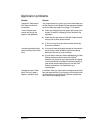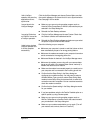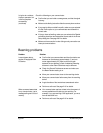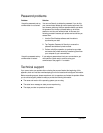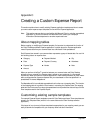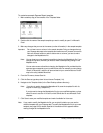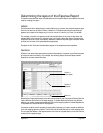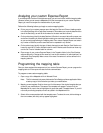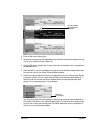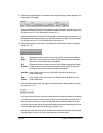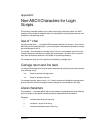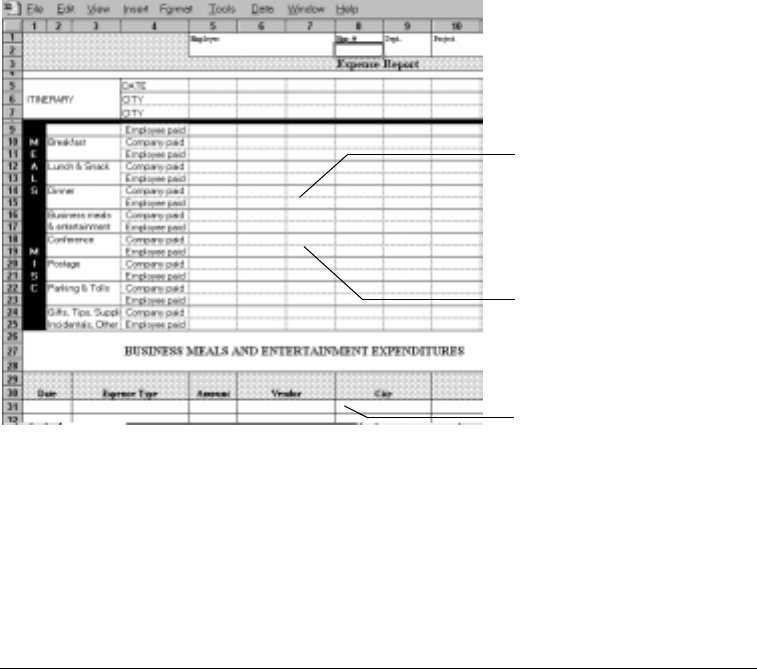
Appendix C Page 227
Determining the layout of the Expense Report
This section describes the layout considerations for the Expense Report and explains the terms
used for creating the report.
Labels
There are two kinds of labels that you need to define for your report: day/date and expense type.
Each kind of label can be either Fixed or Variable. A Fixed label means that the label always
appears as a header at the beginning of a row or column. If a label is not Fixed, it is variable.
For example, a list table of expenses could have variable labels in the rows for day/date, and
variable labels in the columns for expense type. In this case, neither day/date or expense type
information would be “fixed” (as a header). Instead, the date and expense type information would
be filled into the cells of the spreadsheet as appropriate.
Examples of both Fixed and Variable labels appear in the sample expense templates.
Sections
A Section is an area of the report that has common formatting. It is common for an Expense report
to have more than one Section. For example, the following sample Expense Report named
Sample3.xlt contains several Sections.
Because your Expense data maps to row and column areas of your final report, different Sections
require different definitions for the data mapping. To create additional Sections with different
mapping, you create corresponding additional lines to the mapping table file named Maptable.xls.
This procedure is explained later in this appendix.
If a section contains cells for prepaid (company paid) expenses, you need to create an additional
line in the mapping table for “prepaid.” This will count as an additional section in the mapping table.
The only data that differs in the prepaid section (from the non-prepaid section) is the row/column
numbers for the expense type.
Section 1
(not prepaid)
Section 2
(prepaid)
Section 3



